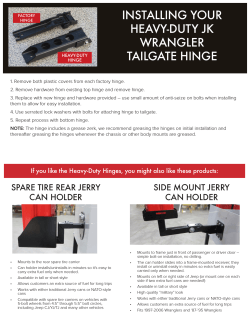
SolidWorks Individual Project - My Razor Scooter -
SolidWorks Individual Project - My Razor Scooter James Redmond, Engineering Design 100 Section 025 I chose to model my scooter for my SolidWorks project, and I’m glad that I did. It was challenging for me but it was a very rewarding experience, since I am intimately familiar with the way my scooter is supposed to work. That said, I used more extrude cuts on this project, shown in full in figure 1, than all the trees in the world could shake a stick at. Probably the most important concept I got from class in making this model was the process of tracing a cross section of an object very Figure 1. My finished assembly was precisely and then extruding it; I am very proud of my determined to remain upside-down. almost fully-functional tightening brace for the upper portion of the steering column, which I created by tracing out the cross section, extruding it, making a variety of cuts with reference planes, and then adding new material in. Largely the model is functional with the exception of the lever action on the hinge, which is connected to nothing but the other side of the lever (I can’t see inside my scooter to know how that works). There is also a conspicuous lack of bearings, and certain plastic connective tissue remains to be seen, but I had enough trouble with existing parts and joints. One of my main problems was trying to figure out how the axle/hinge part on the bottom, shown in figures 2 and 3, should even be synthesized, since most of the other parts are single bodies that can be extruded and then added to. This required me to think spatially before working, and in doing so I realized I would need to create the rectangular part first, at its given angle, and then extrude and cut out the part that holds the steering column as a second step. Overall I am pleased with the result; there is something very satisfying when after all your frustrations an object materializes in an assembly looking just the way you’d envisioned. Figure 2. The axle/hinge piece posed spatial challenges. Figure 3. By creating the cylindrical piece last, I was able to synthesize the part. Figure 4. This clamping joint was my first significant success in the project. Figure 5. The pads on the handles were created with circular lofts. Figure 6. The cutaway for the back wheel offered insight into the base’s structure. Figure 7. The drawing of the assembly unfortunately reflects the scooter’s orientation foibles.
© Copyright 2025














